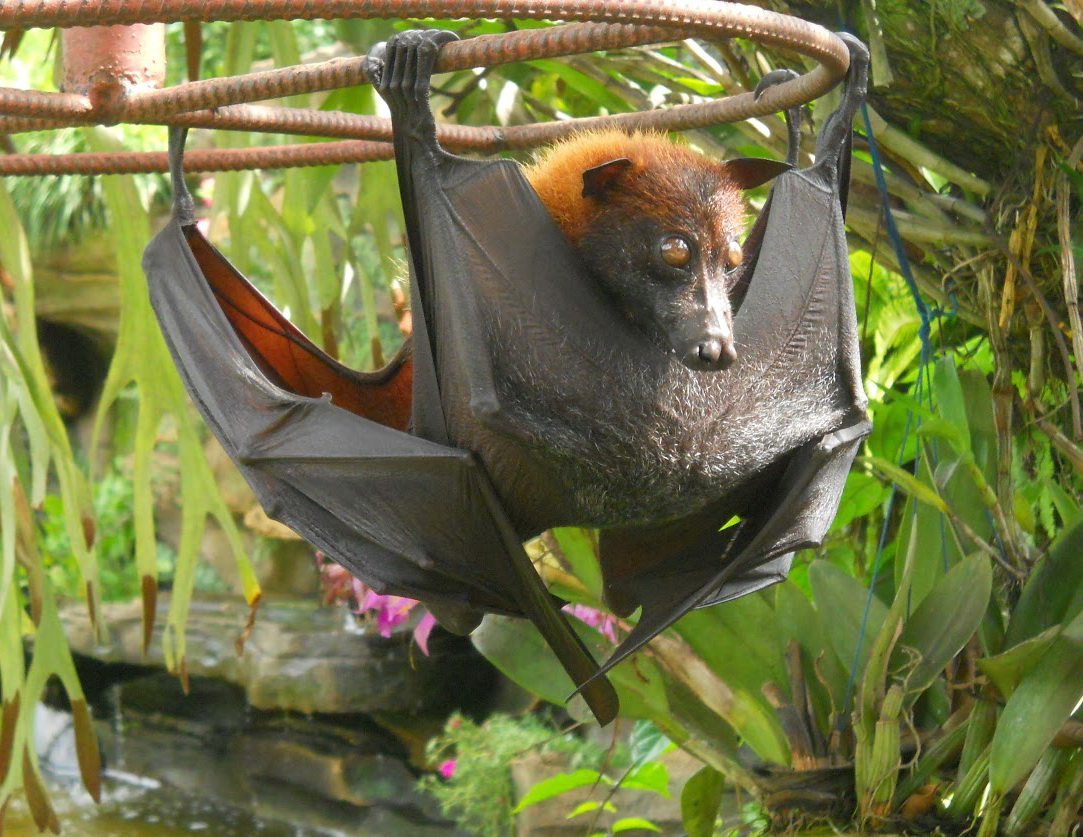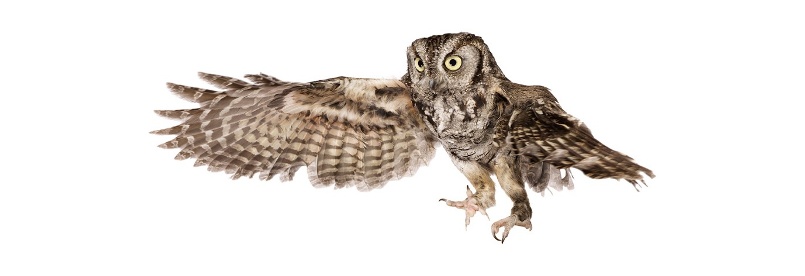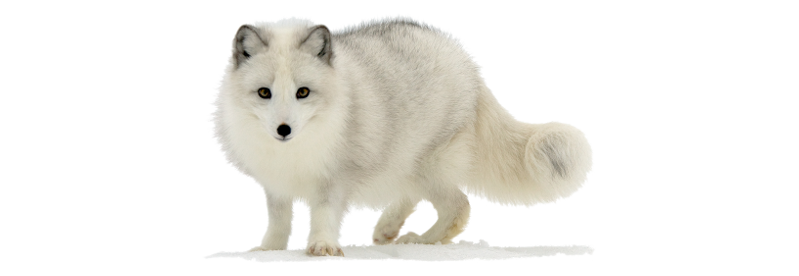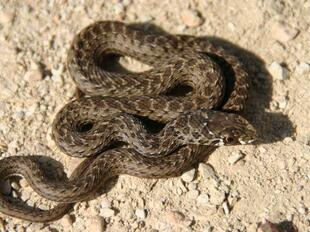
Large flying fox, or Greater flying fox, or Malaysian flying fox, or Kalang, or Kalong(Pteropus vampyrus)
Phylum —chordata
Class — mammalia
Order — chiroptera
Family — pteropodidae
Genus – pteropus
Appearance
The Large flying fox is among the largest species of bat. It weighs 0.65–1.1 kg (1.4–2.4 lb) and has a wingspan of up to 1.5 m (4 ft 11 in). Its head-body length is 27–32 cm (11–13 in). Its forearm length is 180–220 mm (7.1–8.7 in). The hairs on much of its body are long and woolly, but are shorter and more erect on the upper back. The mantle hairs tend to be the longest. The color and texture of the coat differ between sexes and age classes. Males tend to have slightly stiffer and thicker coats than females. Immature individuals are almost all dull gray-brown. Young have a dark-colored mantle that becomes lighter in males when they mature. The head has hairs that range in color from mahogany-red and orange-ochreous to blackish. The ventral areas are brown or blackish, tinged with chocolate, gray or silver. The mantle can vary from pale dirty-buff to orange-yellow, while the chest is usually dark-golden brown or dark russet.
Habitat
Large flying foxes are found in southeast Asia. They range from the Malay Peninsula to the Philippines in the east and Indonesian Archipelago of Sumatra, Java, Borneo, and Timor in the south.
Behavior
Large flying foxes are very social creatures that roost in the thousands. One colony even was recorded numbering around 2,000 individuals and colonies of 10,000-20,000 have also been reported. They are nocturnal and may fly up to 50 km (31 mi) to their feeding grounds in one night. During the flight, bats are not vocal. Upon arrival at feeding grounds, large flocks form family or feeding groups. They may circle a fruit tree before landing, and usually land on the tips of branches in an upright position, then fall into a head-down position from which they feed. Feeding aggregations tend to be very noisy. Large flying foxes are territorial and they demonstrate it by growling and the spreading of wings. During antagonistic behavior, individuals maintain spacing with wrists/thumbs sparring, bites, and loud vocalizations. When moving to a suitable resting place after landing, an individual may fight with conspecifics along the way. When roosting the flying fox is positioned upside down with its wings wrapped up and when it gets too warm, the bat fans itself with its wings. Roosting bats are usually restless until midmorning.
Diet
Large flying foxes are herbivorous (frugivorous, nectarivorous, polynivorous) animals. They feed on flowers, nectar, and fruit. When all three food items are available, flowers and nectar are preferred. They also consume pollen, nectar, and flower of coconut and durian trees, as well as the fruits of rambutan, fig and langsat trees. Flying foxes will also eat mangoes and bananas.
Reproduction
Large flying foxes are polygynous. Males protect a small harem and mate with around ten females. The breeding season varies locally and females give birth to a single pup each year. The gestation period lasts around 140-190 days. For the first days after giving birth, the mothers carry their young but leave them at the roost when they go on their foraging trips. The young are usually weaned by two to three months. Both males and females in this species become reproductively mature at 2 years of age.
Pteropus vampyrus can live 15 to 30 years in captivity, and an average of 15 years in the wild.
In captivity
The Kalong gets used to captivity quickly, and becomes attached, like a dog, to the person who feeds and cares for it. It allows to pat on its head, while not even trying to bite or drink blood.
The bats need to move and fly. Ideally, they are kept in spacious enclosures, from 2 meters wide. It is possible to keep it in a cage for large parrots, so that it could spread its wings completely in its span of 30 cm (the gaps between the bars should not exceed 2 cm), BUT it is necessary to release them for a walk around the room for at least a few hours.
It is necessary to release it to fly on an empty stomach (and during the "walk" do not feed or treat the animal), the Kalongs have a very high-speed metabolism, that`s why the treat will be in the processed form on the floor or walls in 10-20 minutes.
You can feed it sweet fruits. Its favorite treats: papaya, bananas, mango. They drink sweet water. Water can be diluted with honey or with children's vitamins.
 Russian
Russian
 English
English
























